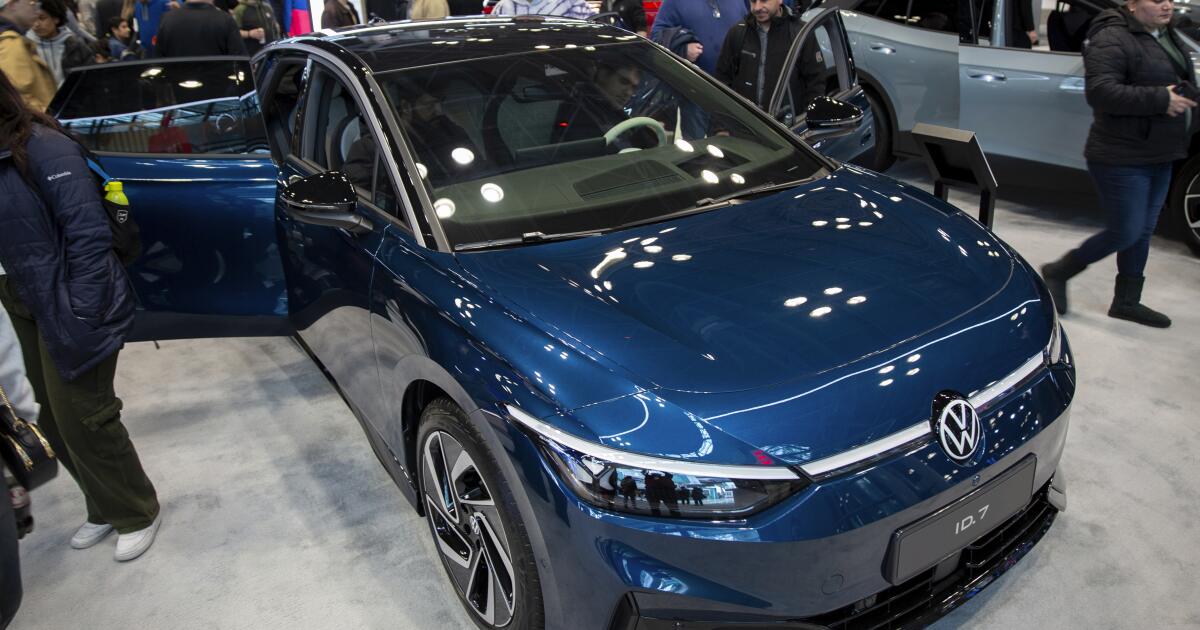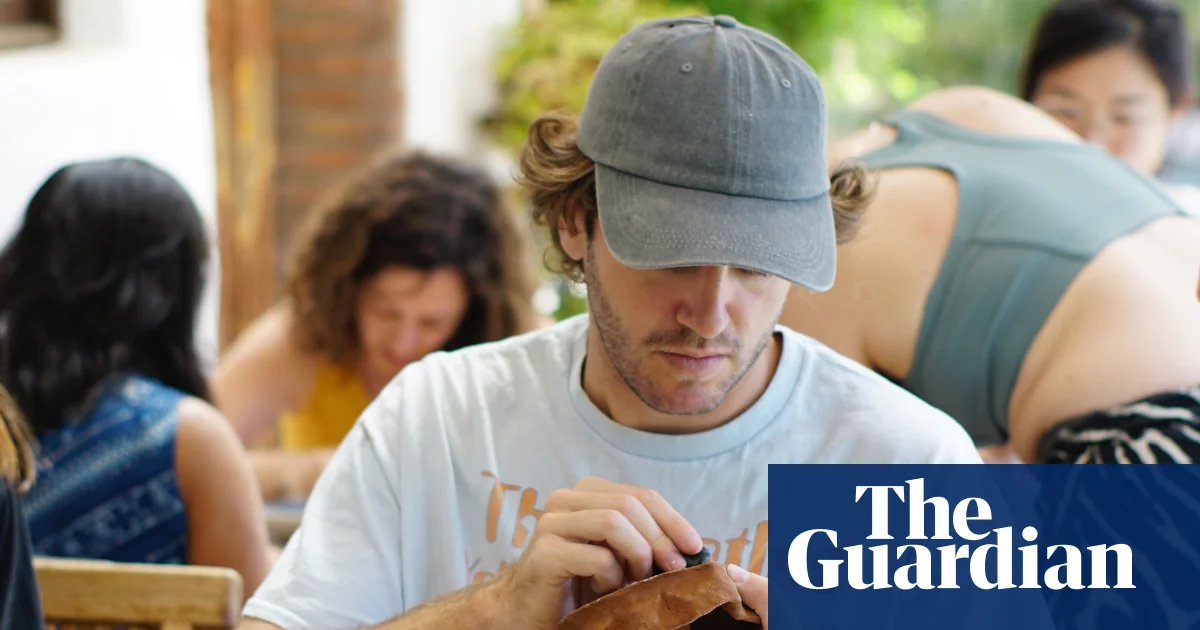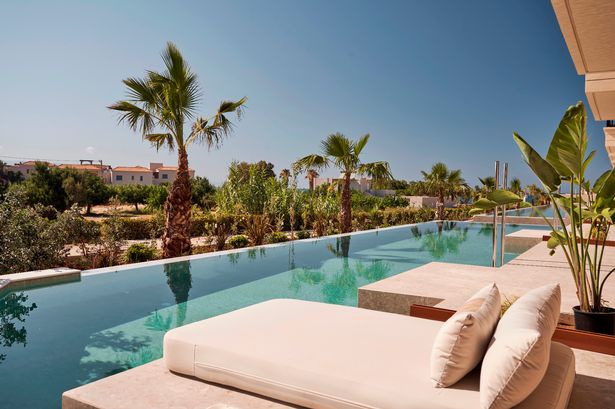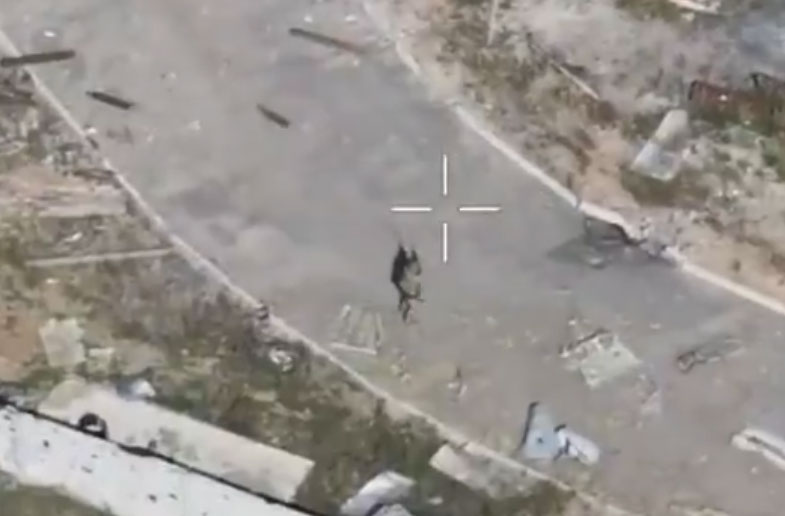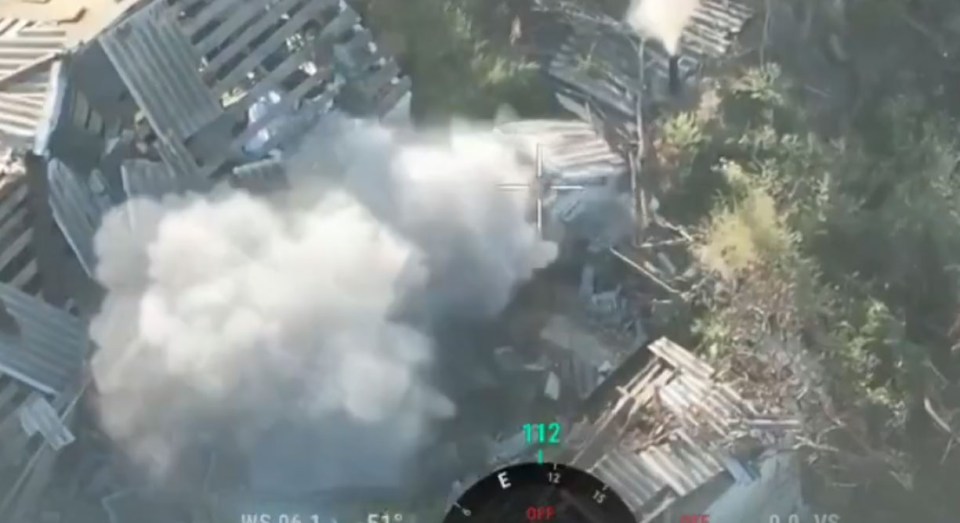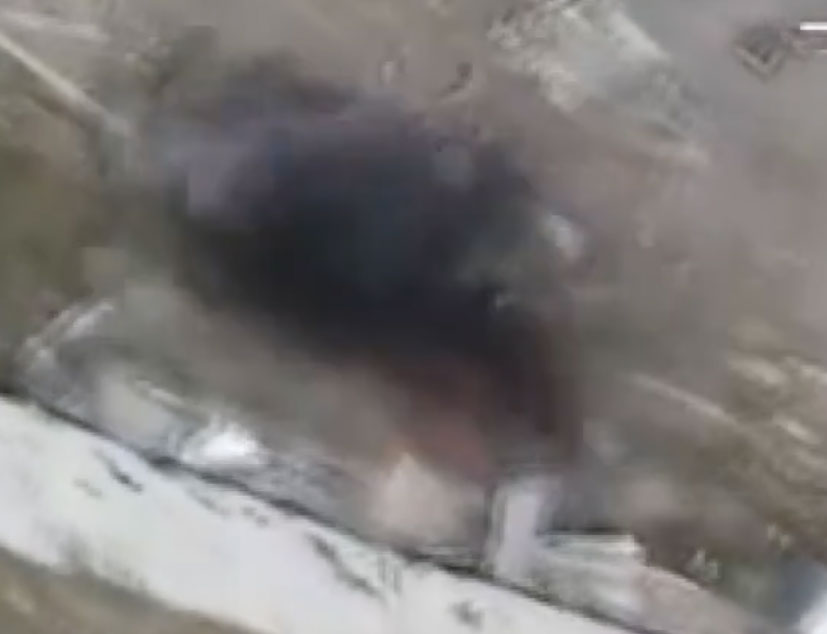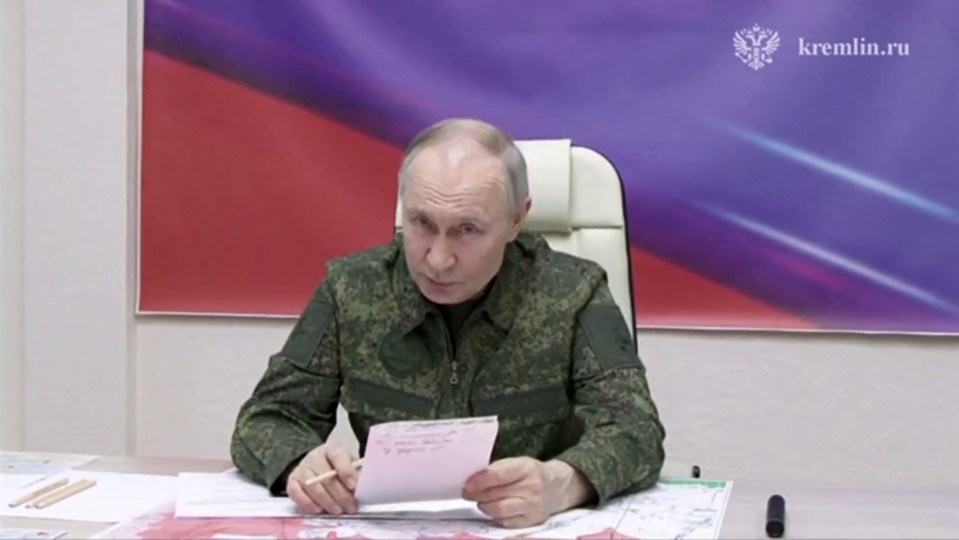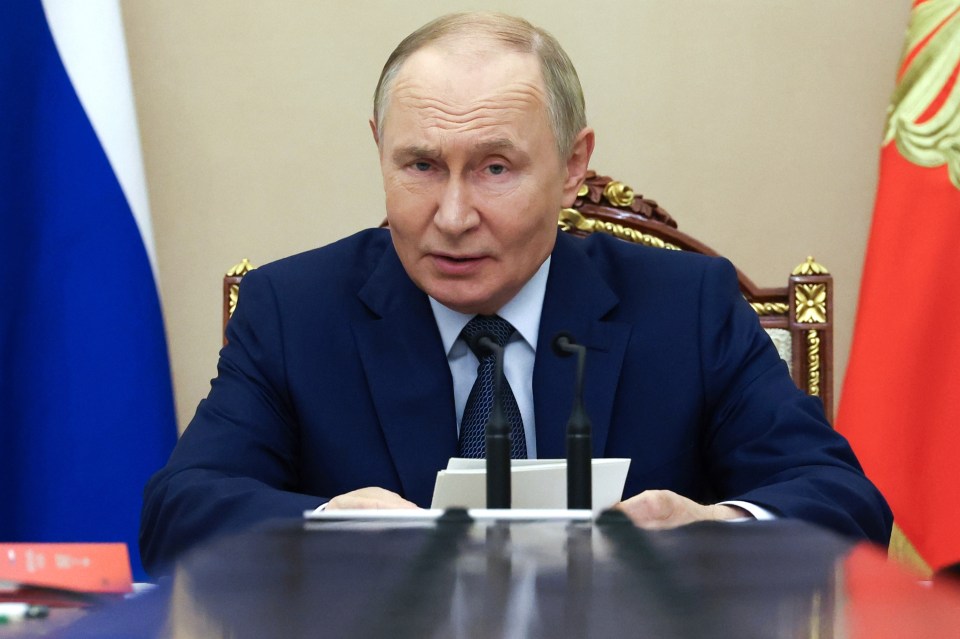The great EV retreat of 2025
In recent years, it’s become abundantly clear this region’s war on smog hinges on the adoption electric vehicles. And, for the first time in a generation, we may be headed in the wrong direction.
If you’ve followed my coverage, you probably know that Southern California’s persistently sunny climate and mountains work together to form and trap smog over our region. And, that the leading source of smog-forming pollution is the same today as it was decades ago: gas-guzzling cars and trucks.
State regulators have made tremendous progress in the last few decades when it comes to curbing tailpipe pollution; California, for example, was the first state to adopt engine emission standards and mandate catalytic converters, regulations that were later adopted nationwide. But Southern California has yet to achieve any federal air quality standards for smog.
And now, electric vehicles and hybrids face significant headwinds due to recent policy changes under the Trump administration.
Since President Trump’s return to the Oval Office, the U.S. Environmental Protection Agency has successfully campaigned to invalidate several California auto emission standards, including a landmark rule that would’ve required 35% of new vehicles that automakers supply to California car dealerships to be zero-emission or plug-in hybrid starting next year.
Separately, Trump’s budget bill terminated federal incentives at the end of September that made zero-emission vehicles more cost-competitive with gas cars. As I recently wrote, California saw record-high sales numbers of EVs and other clean vehicles as consumers scrambled to dealerships to take advantage of expiring deals.
But now, without these two crucial policy levers driving EV adoption, the industry is at an inflection point.
A new EV costs about $8,000 more on average than a gas car, according to Kelley Blue Book.
The overall cost of ownership for EVs can still be cheaper than for gas cars due to lower fuel and maintenance costs. However, the question is, will Americans accept a higher upfront price tag in exchange for fewer costs — and less pollution — down the road?
The auto industry doesn’t pivot on a dime. Car lineups are designed, produced and released years in advance. But, in the last year, amid a torrent of policy decisions coming from the Trump White House, car companies have announced many moves that signal a retreat from some zero-emission vehicles:
- Acura discontinued its electric ZDX after just releasing one model year.
- Ford scrapped its forthcoming all-electric three-row SUV program.
- General Motors discontinued the Brightdrop van, an electric delivery van.
- Ram pivoted from releasing an all-electric pickup truck to a plug-in hybrid model.
- Stellantis shelved its hydrogen fuel cell program for commercial vans.
- Volkswagen canceled the release of its ID.7 sedan in North America.
The loss of new or forthcoming zero-emission models is disheartening, said Joel Levin, executive director of Plug In America, a nonprofit that hosts events to advocate for more EVs. But, he added, most of these were fledgling models that did not make up a large share of sales.
“I think it’s that people are just being more selective about what they’re bringing to market, and are focusing in on the vehicles that they really feel like have legs,” Levin said. “So it’s a loss. I’m sad about it. But I don’t think that it’s an existential threat to the market.”
In the last decade, Levin has seen the national market share of EVs and plug-in hybrids compared with overall car sales grow from a fraction of a percent in 2015 to roughly 10% in 2024. In California, that number was even higher, at 25%.
Levin said that can largely be attributed to advancement of battery technology, which has allowed for drastically longer range. But EVs also offer technological amenities that gas counterparts do not.
“Ford has advertised how you can use your pickup truck as backup power for your house if the power goes out,” Levin said. “Or if you’re a contractor or rancher and you need to use power tools somewhere remote away from your house, you can just plug them into your truck. If you’re camping, you can set up your electric kitchen, or you can watch movies, or you can charge your equipment.”
Those features may help win over some drivers. But experts say government regulations are necessary to achieve California’s air quality and climate targets.
California is suing the federal government and Trump administration, alleging they illegally overturned the state’s auto emission standards. The state Air Resources Board has also proposed several ideas to boost EV sales, such as providing free access to toll roads to EV and hybrid drivers.
That said, Gov. Gavin Newsom recently ruled out one of the most powerful tools at his disposal to promote a clean fleet of vehicles in California, as he reneged on his commitment to restore a state rebate program for EV buyers that he had previously vowed to put into effect if Trump eliminated federal incentives.
Dan Sperling, a former CARB board member and UC Davis professor, said the state might consider a “feebate” program in which the state could impose fees on the sales of the most polluting cars, which would then be used to fund rebates for EV and hybrid purchases.
Meanwhile, as consumer sentiment and government policies vacillate in the U.S., demand internationally continues to grow. And American automakers will need to keep investing in EVs if they want to stay globally competitive. Sperling, who took my call while traveling to Paris, said he noticed Chinese EVs throughout the city.
“In China, 50% of all their vehicles that they sell are electric vehicles,” Sperling said. “They sell more electric vehicles in China than total cars sold in the U.S.”
“The vehicle industry is an international industry and so they can’t afford to just give up on electric vehicles, because that means they’re giving up on the rest of the world.”
Air news this week
Ten years after the disastrous Aliso Canyon gas leak, my colleague Hayley Smith spoke with residents about their recollections of the dangerous release of some 120,000 tons of methane and other toxic chemicals near Porter Ranch. Despite persistent environmental concerns, regulators have voted to keep the gas storage facility online, citing concerns over energy demand.
A judge ordered a Watts recycling facility to permanently shut down and pay $2 million in restitution and fines after the company and its owners pleaded no contest to illegally dumping hazardous waste that was polluting a nearby high school.
Environmental groups recently sued the Trump administration for lifting restrictions on dozens of chemical manufacturing plants, according to InsideClimate News reporter Keerti Gopal.
LAist’s AirTalk host Larry Mantle hosted a great conversation on how Los Angeles became the nation’s smog capital. He and Chip Jacobs, the author of “Smogtown: The Lung-Burning History of Pollution in Los Angeles,” recounted the region’s first brush with toxic haze in the 1940s and pollution’s lasting legacy in Southern California.
Associated Press reporters Sheikh Saaliq and Sibi Arasu reported that officials in India are undertaking cloud-seeding experiments as a way to clear air pollution in New Delhi. The controversial approach involves using aircraft to spray chemicals into clouds above the city in hopes of triggering rainfall that would suppress the smog.
One more thing in climate news …
Hurricane Melissa, one of the strongest hurricanes recorded to date in the Atlantic, killed more than 20 people as it barreled through Jamaica, Haiti and Cuba, according to the Washington Post. The proliferation of greenhouse gases from burning fossil fuels undoubtedly contributed to the historically powerful storm. Because a warmer atmosphere can hold more moisture and foster more intense storms, Melissa may be a harbinger of what’s to come.
Making matters worse, Bloomberg reporters Leslie Kaufman and Fabiano Maisonnave report that wealthy countries are not giving poorer nations the climate adaptation funding they need, according to the United Nations Environmental Programme. As climate risks in many of these countries increase, funding to adapt to climate change is shrinking.
This is the latest edition of Boiling Point, a newsletter about climate change and the environment in the American West. Sign up here to get it in your inbox. And listen to our Boiling Point podcast here.
For more air quality and climate news, follow Tony Briscoe at @_tonybriscoe on X.
